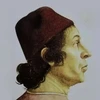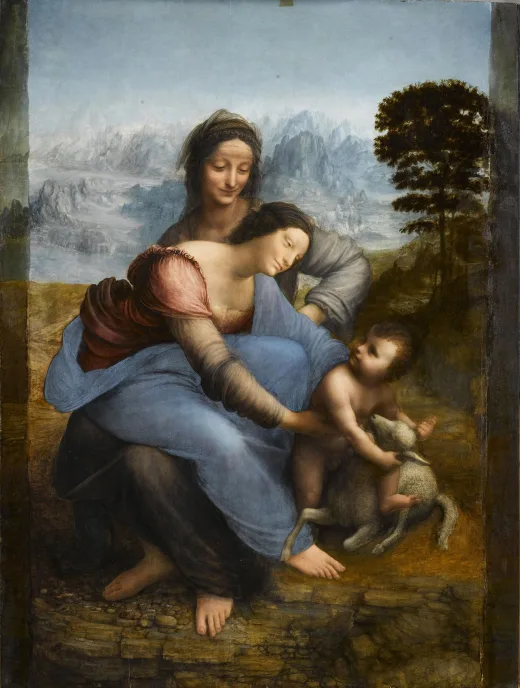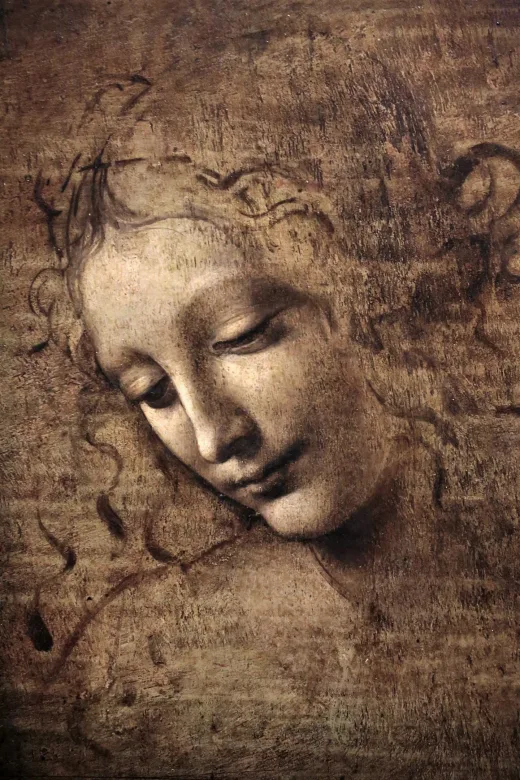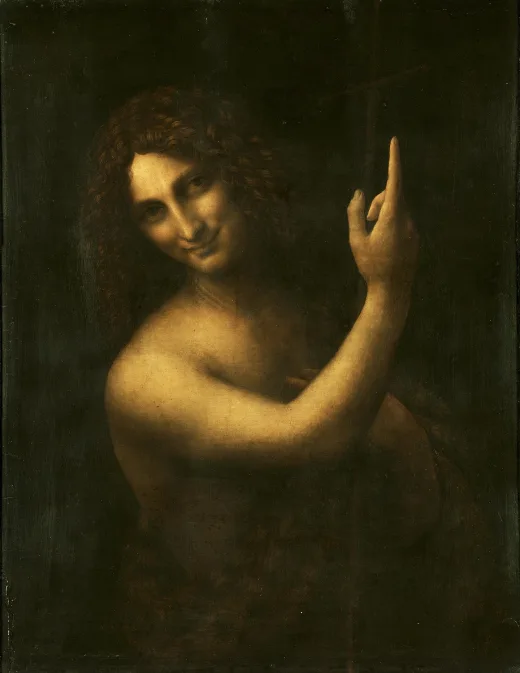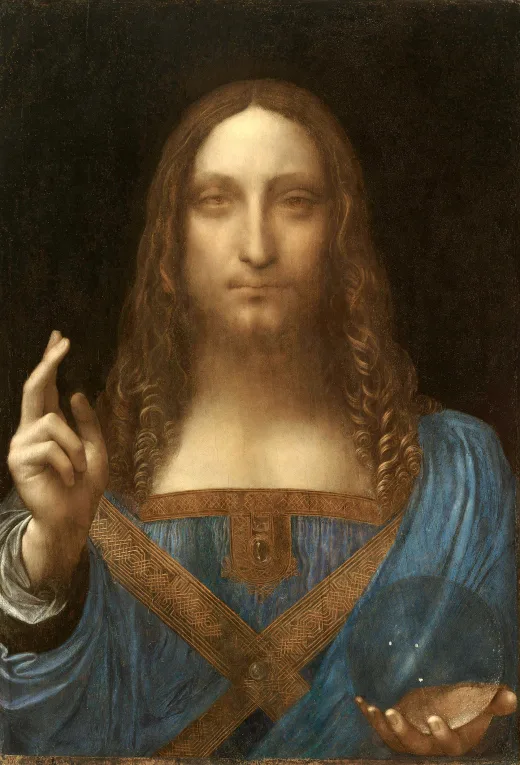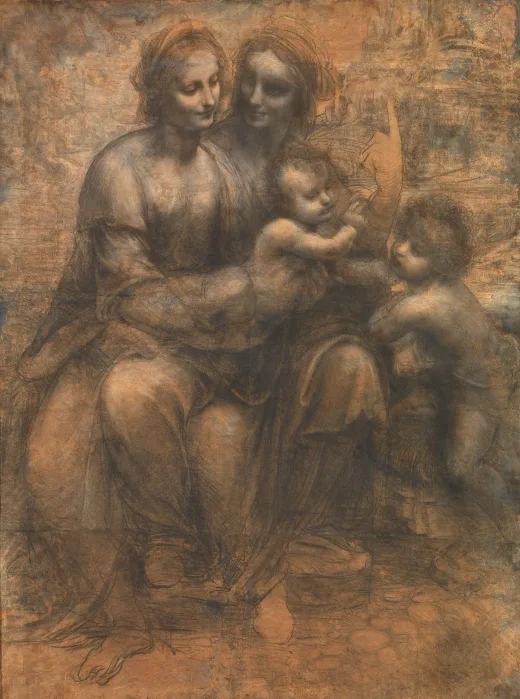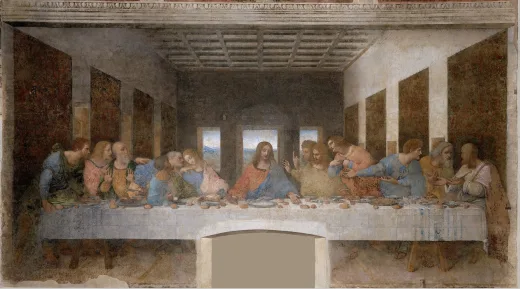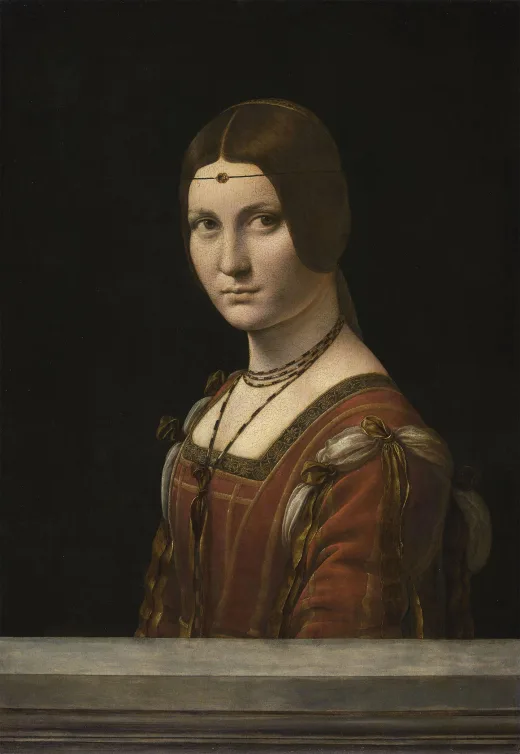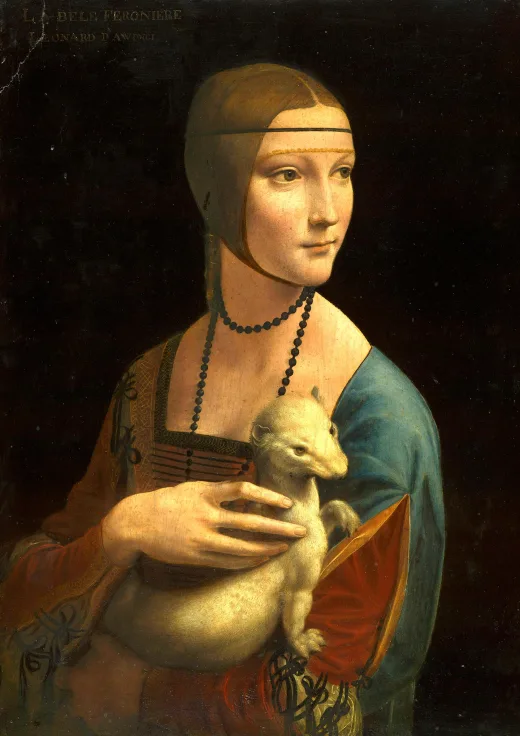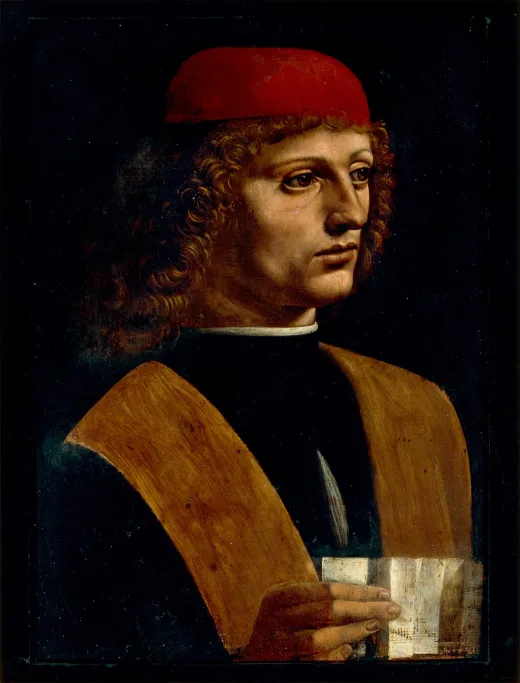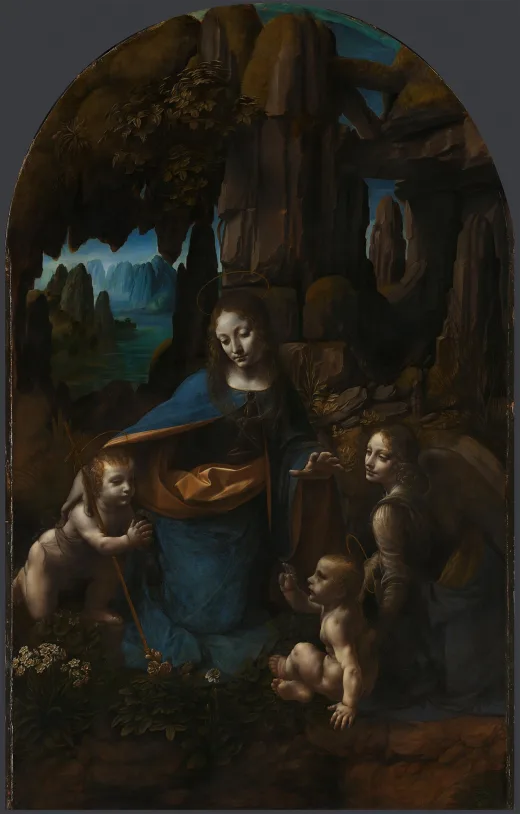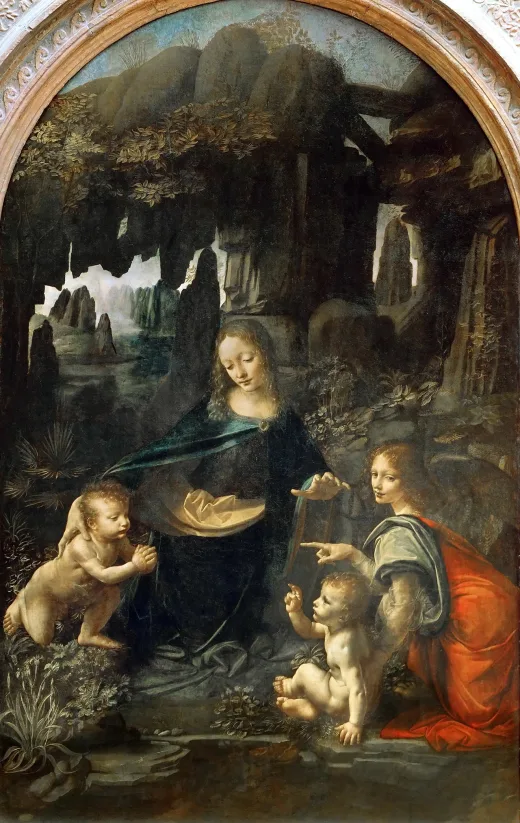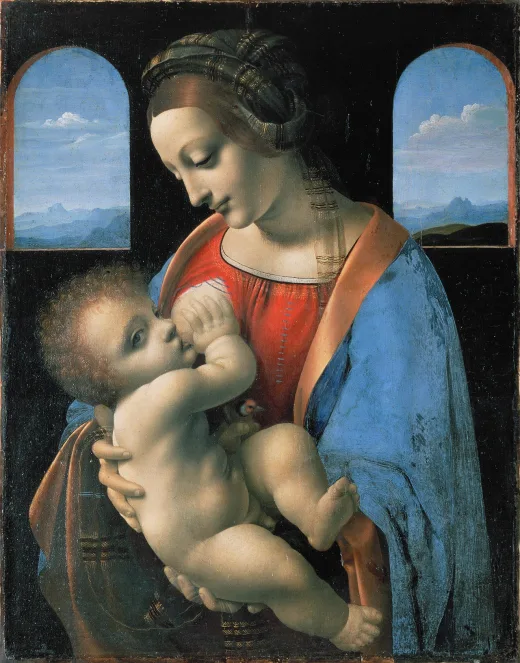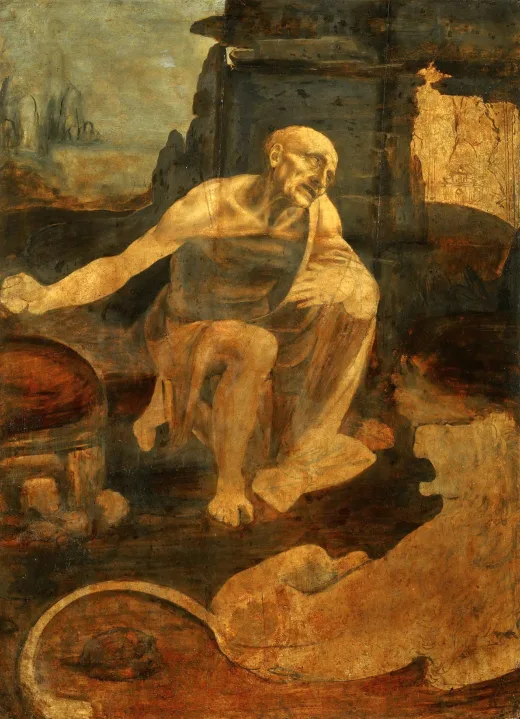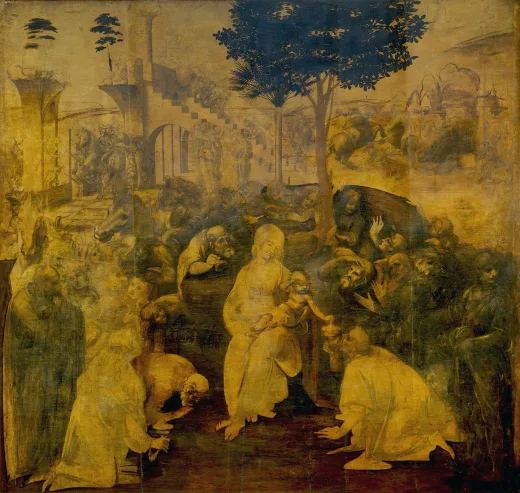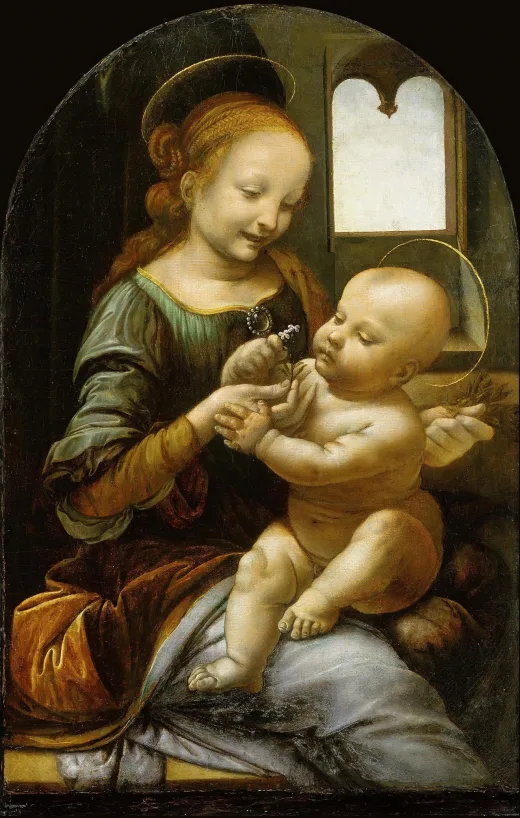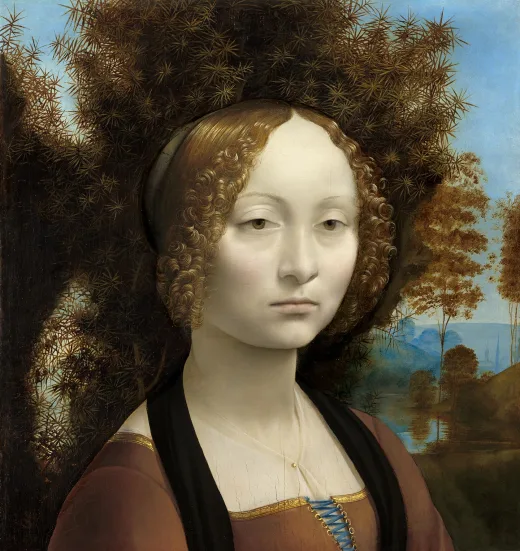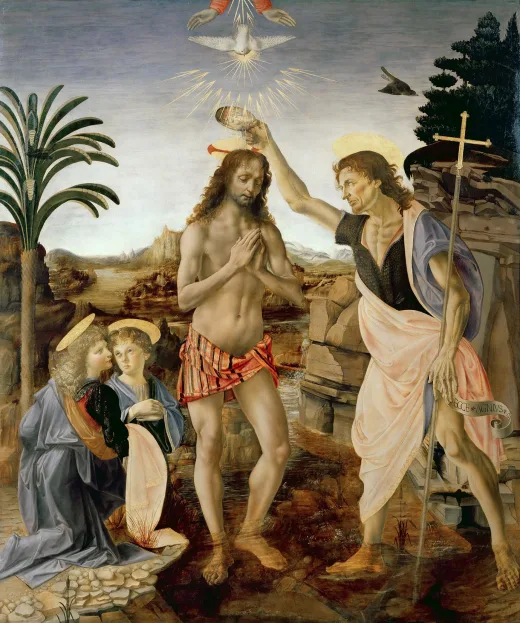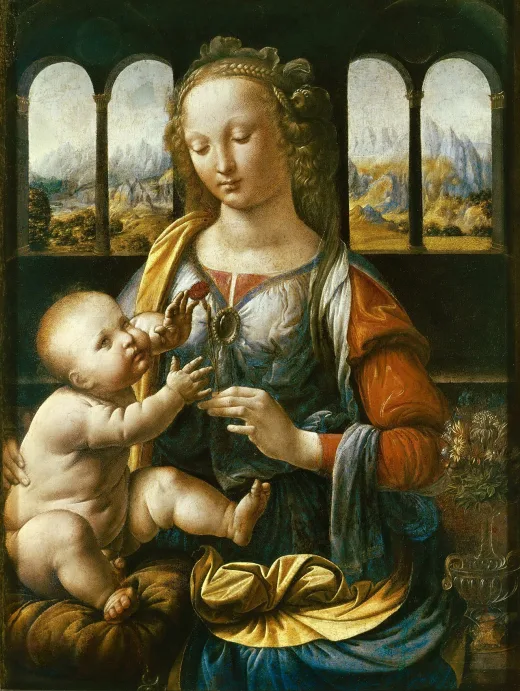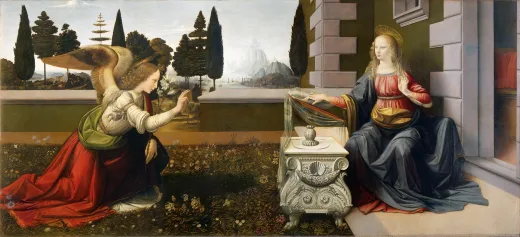马萨乔壁画《圣三位一体》图片
原图尺寸:1707×3800像素(72 DPI)标清图
下载原图消耗2艺点
文件大小:15.36 MB
下载格式: ZIP ( PNG+JPG )
作品名称:圣三位一体(附圣母、圣约翰及供养人像)
The Holy Trinity(with the Virgin and Saint John and donors)
作品作者:马萨乔(Masaccio)
创作时间:1427年
作品风格:文艺复兴早期
原作尺寸:667×317厘米
作品材质:壁画
收藏位置:佛罗伦萨圣母玛利亚教堂
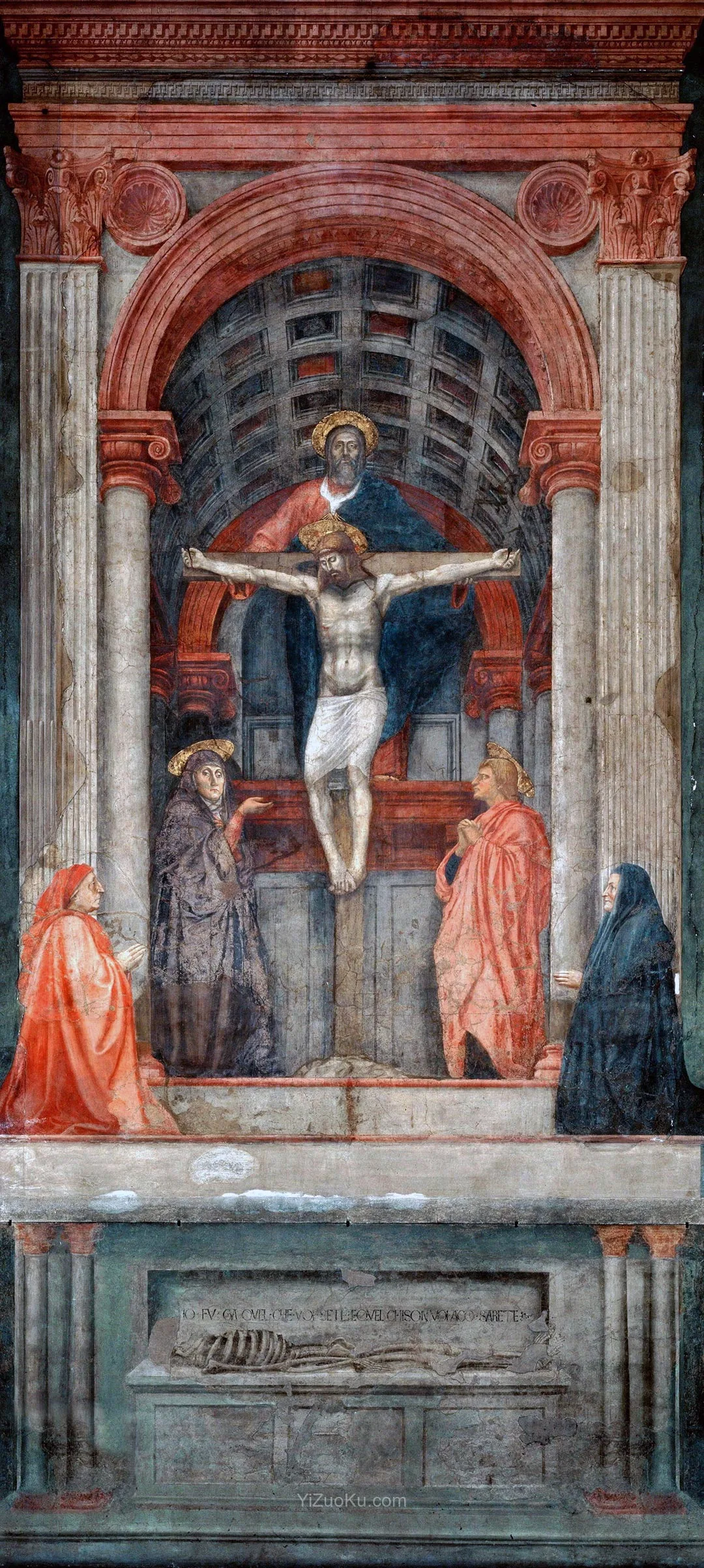
作品简介
圣三位一体 (The Holy Trinity, with the Virgin and Saint John and donors)(意大利语:Santa Trinità)早期文艺复兴画家马萨乔于1427年绘画的壁画。此画在佛罗伦萨圣母玛利亚教堂。
这幅画有明显的消失点,约是人的高度,是单点透视的画。画家用鸽子代表圣灵,站在耶稣的头上。圣父则在耶稣背后。耶稣脚下的人是画的赞助人。
画面下方的骷髅骨上写着:"IO FU[I] G[I]A QUEL CHE VOI S[I]ETE E QUEL CH['] I[O] SONO VO[I] A[N]C[OR] SARETE"意谓“我曾是你们之中的一员,也是你们将来的样子”。
In the third arcade of the left nave, in place of the altar, one can admire the fresco of the Holy Trinity (1425-1426) by Tommaso Guidi, known as Masaccio.
In 1570 Giorgio Vasari covered the fresco with a stone altar and painting of the Madonna del Rosario now on show in the Bardi Chapel, upon the wishes of Camilla di Pietro Capponi, the widow of Pietro Arrighetti, in her last will and testament. The fresco was rediscovered in good condition during an 18th century restoration of the Church. It was removed from the wall and reassembled on the inner wall of the facade, between the central and the eastern portals. When another restoration was undertaken in 1952 the Death (or skeleton) painted by MASACCIO at the bottom of the Holy Trinity fresco was discovered underneath the plaster and was put back in its original place. On the ghoulish skeleton the words "WHAT YOU ARE, I ONCE WAS; WHAT I AM, YOU WILL BECOME" can be read. This is not a terrifying reminder of the transience of life that would ring somewhat macabre in this triumphal representation of the Holy Trinity. Instead they are the words that Christ, living on earth like men and women exiled for the sin of failing to submit to God, addresses to the Father and lives for eternity by submitting entirely to him, until his death. St. John tells us his words (John 17, 10-11), "I will remain in the world no longer, but they are still in the world, and I am coming to you. Holy Father, protect them by the power of your name—the name you gave me—so that they may be one as we are one." Humankind, therefore, secures the physical reality of his body, the temple of the Holy Spirit for eternal life and the certainty of the existence of God in the certainty of the Witness of the Risen One.
The magnificent architectural creation, one of the first and foremost examples of Renaissance perspective, still attracts students of art, as it did in the first half of the 1400s. In the scene of a chapel reminiscent of a classical triumphal arch overhead, one sees the Eternal Father, below, the Holy Spirit as a dove, and Jesus Crucified between the Virgin and St. John the Evangelist. On either side, below, are the figures of the work’s patrons, a husband and wife.
MASACCIO painted the fresco to the left of the axis of the wall, towards 12 o’clock, because the position from which he would have had an overall view, from afar – basically the portal that was recently reopened (see above) – has shifted to the right, northwards, on the opposite wall. Indeed, entering the church on this side, looking out over the entire space where the fresco is situated, one may also see the previous doorway, to the south, so that the Trinity would have been at the exact center of this wider field of vision between the pillars dividing the central from the side nave. This does not mean, however, that the triumphal representation of the Holy Trinity also assumes a closer central point of view, specifically by the tombstones lined up between these pillars. This dual field of vision strengthens the traditionally accepted view that it was BRUNELLESCHI who constructed this extraordinary perspective, according to experts who are aware of the studies the architect had made and the knowledge he possessed.
在左侧廊第三拱廊处,原祭坛位置可见马萨乔(本名托马索·圭迪)1425-1426年创作的《圣三位一体》湿壁画。1570年,根据彼得罗·阿里盖蒂之遗孀卡米拉·迪·彼得罗·卡波尼的遗嘱要求,乔尔乔·瓦萨里用石制祭坛及《玫瑰圣母》画作覆盖了该壁画(现展于巴尔迪小堂)。18世纪教堂修复期间,这幅保存完好的湿壁画重见天日,被从墙体剥离后重组于正立面内墙中央门与东侧门之间。1952年再度修复时,工作人员在灰泥下层发现了马萨乔绘于壁画底部的《死亡》(骷髅骨架),遂使其重归原位。
骷髅骨架上方铭刻着"尔之所是,吾曾为是;吾之所是,尔将为是"。这并非对生命转瞬即逝的恐怖警示——在此圣三位一体的凯旋式呈现中显得过于阴森——实乃道成肉身的基督向圣父所言:他如被放逐的世人般生活,却通过全然顺服直至死亡而获得永生。圣约翰记载其言(《约翰福音》17:10-11):"我不再在世上,他们却在世上,我往你那里去。圣父啊,求你因你所赐给我的名保守他们,叫他们合而为一,像我们一样。"人类由此确证:其身为圣灵殿堂的实体性,将通过复活见证者获得永生及神存在的确据。
这幅运用文艺复兴透视法的开山之作,其宏伟建筑构造至今仍如15世纪上半叶般吸引着艺术学子。画面中,古典凯旋门式的礼拜堂穹顶下可见永恒圣父,其下为鸽形圣灵,被钉十字架的基督则居于圣母与福音书作者圣约翰之间。底部两侧跪着委托此作的夫妇 donor figures。
马萨乔将湿壁画绘制于墙面轴线左侧(近12点钟方位),因当时能纵览全景的观察点——即近期重开的门户——已随对面墙体北移。事实上,若从教堂此侧入口眺望壁画所在整体空间,仍可见南侧原始门廊,使圣三位一体恰好处于中殿与侧廊立柱构成的更广阔视野中心。但这不意味着圣三位一体的凯旋式呈现也需以墓碑排列处为近处视点。这种双重视野强化了学术界的传统认知:根据对建筑师研究成果的考证,该非凡透视构造应出自布鲁内莱斯基之手。
